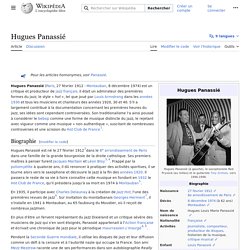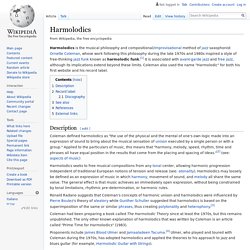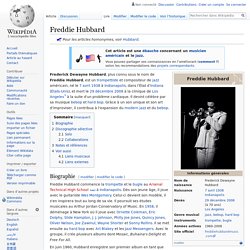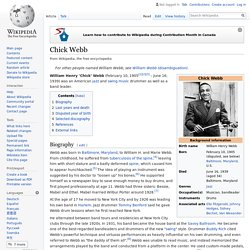

Hugues Panassié. Hugues Panassié (à gauche), le saxophoniste Red Prysock (au milieu) et le guitariste Tiny Grimes, vers 1946-1948.

Hugues Panassié (Paris, 27 février 1912 - Montauban, 8 décembre 1974) est un critique et producteur de jazz français. Il était un admirateur des premières formes du jazz, le style « hot », tel que joué par Louis Armstrong dans les années 1930 et tous les musiciens et chanteurs des années 1920, 30 et 40. S'il a largement contribué à la documentation concernant les premières heures du jazz, ses idées sont cependant controversées.
Son traditionalisme l'a ainsi poussé à considérer le bebop comme une forme de musique distincte du jazz, le rejetant avec vigueur comme une musique « non authentique », suscitant de nombreuses controverses et une scission du Hot Club de France[1]. Biographie[modifier | modifier le code] Né dans le 8e arrondissement de Paris le 27 février 1912[2], Hugues Panassié est frappé par la poliomyélite à quatorze ans. Il est inhumé dans le cimetière de Montauban. Alexander Street, a ProQuest Company. Created as a sample of what one might hear on a typical summer day in New York City, Tony Schwartz’s 1952 soundscape features the street games and songs of children of West Midtown Manhattan.

The distinctive variety of rhythms and melodies are demonstrative of the nationalities represented in one of the many ethnically-diverse neighborhoods in the city. Many of Schwartz’s recordings, such as this album, as well as Music in the Streets (see F... Created as a sample of what one might hear on a typical summer day in New York City, Tony Schwartz’s 1952 soundscape features the street games and songs of children of West Midtown Manhattan. The distinctive variety of rhythms and melodies are demonstrative of the nationalities represented in one of the many ethnically-diverse neighborhoods in the city. Show more Show less. Hot. El término ha sido discutido entre la crítica de finales del siglo XX, debido a su utilización ideológica por parte de los sectores más conservadores de la musicología jazzística (Hughes Panassié, Ortiz Oderigo...), aunque su uso es útil desde una perspectiva organizativa y didáctica.

Qué es el Hot[editar] Características comunes[editar] Todos los estilos del Hot tienen una serie de características comunes, que trascienden las diferencias que luego se señalarán.
Comparatif 2017 des meilleures platines vinyles - Comment choisir ? La Société par Actions Simplifiée Purch (ci-après « PURCH »), dont le siège est situé 8 rue de l'Hôtel de Ville, 92200 Neuilly-sur-Seine, au capital social de 501.411,05 euros, enregistrée au RCS de Nanterre sous le numéro 424 382 026, édite un site d'informations dans le domaine des nouvelles technologies, www.tomsguide.fr (ci-après le « Site »), proposant un accès à différentes informations et espaces de discussions, tel que détaillé ci-après.

Les présentes conditions générales d'utilisation (ci-après les "CGU"), soumises au droit français, ont vocation à régir l’accès et l'utilisation du Site par toute personne y accédant (ci-après l’« Utilisateur »), quel que soit le lieu où il se trouve et les modalités de connexion au Site. Harmolodics.
Harmolodics is the musical philosophy and compositional/improvisational method of jazz saxophonist Ornette Coleman, whose work following this philosophy during the late 1970s and 1980s inspired a style of free-thinking jazz funk known as harmolodic funk.[1] It is associated with avant-garde jazz and free jazz, although its implications extend beyond these limits.

Coleman also used the name "Harmolodic" for both his first website and his record label. Description[edit] Coleman defined harmolodics as "the use of the physical and the mental of one's own logic made into an expression of sound to bring about the musical sensation of unison executed by a single person or with a group. " Applied to the particulars of music, this means that "harmony, melody, speed, rhythm, time and phrases all have equal position in the results that come from the placing and spacing of ideas. Coleman had been preparing a book called The Harmolodic Theory since at least the 1970s, but this remains unpublished. Freddie Hubbard. Un article de Wikipédia, l'encyclopédie libre.

Pour les articles homonymes, voir Hubbard. Eric Dolphy. Eric Allan Dolphy, Jr.

(June 20, 1928 – June 29, 1964) was an American jazz alto saxophonist, bass clarinetist and flautist. On a few occasions, he also played the clarinet and piccolo. Dolphy was one of several multi-instrumentalists to gain prominence around the same time. His use of the bass clarinet helped to establish the instrument within jazz. Dolphy extended the vocabulary and boundaries of the alto saxophone, and was among the earliest significant jazz flute soloists. Charlie Parker. Charles Parker Jr.

Chick Webb. William Henry "Chick" Webb (February 10, 1905[1][2][3] – June 16, 1939) was an American jazz and swing music drummer as well as a band leader.

Biography[edit] At the age of 17 he moved to New York City and by 1926 was leading his own band in Harlem. Jazz drummer Tommy Benford said he gave Webb drum lessons when he first reached New York. He alternated between band tours and residencies at New York City clubs through the late 1920s. In 1931, his band became the house band at the Savoy Ballroom. Webb married Martha Loretta Ferguson (also known as "Sallyee"), and in 1935 he began featuring a teenaged Ella Fitzgerald as vocalist. Last years and death[edit] Charlie Christian. Les Années à Oklahoma City[modifier | modifier le code] Contexte social[modifier | modifier le code]

John Hammond (producer) John Henry Hammond II (December 15, 1910 – July 10, 1987) was an American record producer, civil rights activist, and music critic from the 1930s to the early 1980s. In his service as a talent scout, Hammond became one of the most influential figures in 20th-century popular music. Hammond was born in New York to great privilege, christened John Henry Hammond Jr., although both his father and grandfather shared the same name.
He was the youngest child and only son of John Henry Hammond and Emily Vanderbilt Sloane. His mother was one of three daughters of William Douglas Sloane and Emily Thorn Vanderbilt, and a grand-daughter of William Henry Vanderbilt. Bessie Smith. Bessie Smith (April 15, 1894 – September 26, 1937) was an American blues singer. Nicknamed The Empress of the Blues, Smith was the most popular female blues singer of the 1920s and 1930s.[1] She is often regarded as one of the greatest singers of her era and, along with Louis Armstrong, a major influence on other jazz vocalists.[2] Life[edit] The 1900 census indicates that Bessie Smith was born in Chattanooga, Tennessee, in July 1892. However, the 1910 census recorded her birthday as April 15, 1894, a date that appears on all subsequent documents and was observed by the entire Smith family.
Census data also contribute to controversy about the size of her family. Bessie Smith was the daughter of Laura (née Owens) and William Smith. To earn money for their impoverished household, Bessie Smith and her brother Andrew began busking on the streets of Chattanooga as a duo: she singing and dancing, he accompanying her on guitar. In 1912, Clarence returned to Chattanooga with the Stokes troupe. Coleman Hawkins. Coleman Randolph Hawkins (November 21, 1904 – May 19, 1969), nicknamed Hawk and sometimes "Bean", was an American jazz tenor saxophonist.[1] One of the first prominent jazz musicians on his instrument, as Joachim E.
Berendt explained: "there were some tenor players before him, but the instrument was not an acknowledged jazz horn".[2] While Hawkins is strongly associated with the swing music and big band era, he had a role in the development of bebop in the 1940s.[1] Fletcher Henderson. Biography[edit] James Fletcher Henderson was born in Cuthbert, Georgia, in 1897. He grew up in a middle-class African-American family. Count Basie. Billie Holiday. Lester Young. Lee Konitz. Swing (cualidad musical) Dixieland. Dixieland, sometimes referred to as hot jazz or traditional jazz, is a style of jazz based on the music that developed in New Orleans at the start of the 20th century. One of the first uses of the term "Dixieland" with reference to music was in the name of the Original Dixieland Jass Band (which shortly thereafter changed the spelling of its name to "Original Dixieland Jazz Band").
Their 1917 recordings fostered popular awareness of this new style of music. At that time, there was no issue of subgenres of jazz, so "Dixieland" referred to the band and not the music. A revival movement for traditional jazz, formed in reaction to the orchestrated sounds of the swing era and the perceived chaos of the new bebop sounds of the 1940s (referred to as "Chinese music" by Louis Armstrong[citation needed]), pulled "Dixieland" out from the somewhat forgotten band's name for the music they championed.
Joséphine Baker. En 1937, elle devient française à la suite de son mariage avec Jean Lion et, pendant la Seconde Guerre mondiale, elle joue un rôle important dans la résistance à l'occupant. Elle utilise ensuite sa grande popularité dans la lutte contre le racisme, et pour l'émancipation des Noirs, en particulier en soutenant le mouvement américain des droits civiques. Biographie[modifier | modifier le code] Louis Armstrong. Duke Ellington. Edward Kennedy "Duke" Ellington (April 29, 1899 – May 24, 1974) was an American composer, pianist, and leader of a jazz orchestra, which he led from 1923 until his death over a career spanning more than fifty years.[1] Born in Washington, D.C., Ellington was based in New York City from the mid-1920s onward and gained a national profile through his orchestra's appearances at the Cotton Club in Harlem.
In the 1930s, his orchestra toured in Europe. Sidney Bechet. Sidney Bechet (May 14, 1897 – May 14, 1959) was an American jazz saxophonist, clarinetist, and composer. He was one of the first important soloists in jazz, beating trumpeter Louis Armstrong to the recording studio by several months.[1] His erratic temperament hampered his career, and not until the late 1940s did he earn wide acclaim. Biography[edit] Bechet was born in New Orleans in 1897 to a middle-class Creole of color family. His older brother, Leonard Victor Bechet, was a full-time dentist and a part-time trombonist and bandleader.
Bechet learned several musical instruments that were kept around the house, mostly by teaching himself; he decided to specialize in the clarinet. James Reese Europe. James Reese Europe (February 22, 1880 – May 9, 1919), sometimes known as Jim Europe, was an American ragtime and early jazz bandleader, arranger, and composer. He was the leading figure on the African-American music scene of New York City in the 1910s. Eubie Blake called him the "Martin Luther King of music".[1] Original Dixieland Jass Band. King Oliver. Freddie Keppard. Jelly Roll Morton. Buddy Bolden.